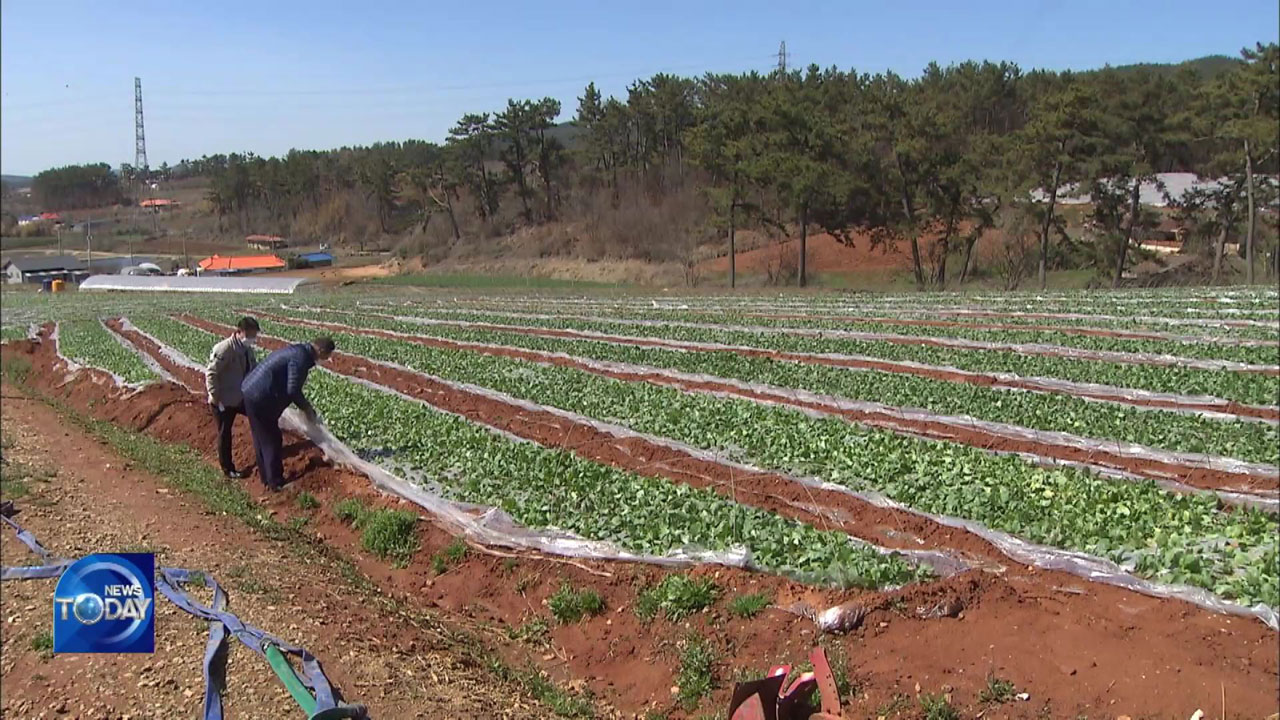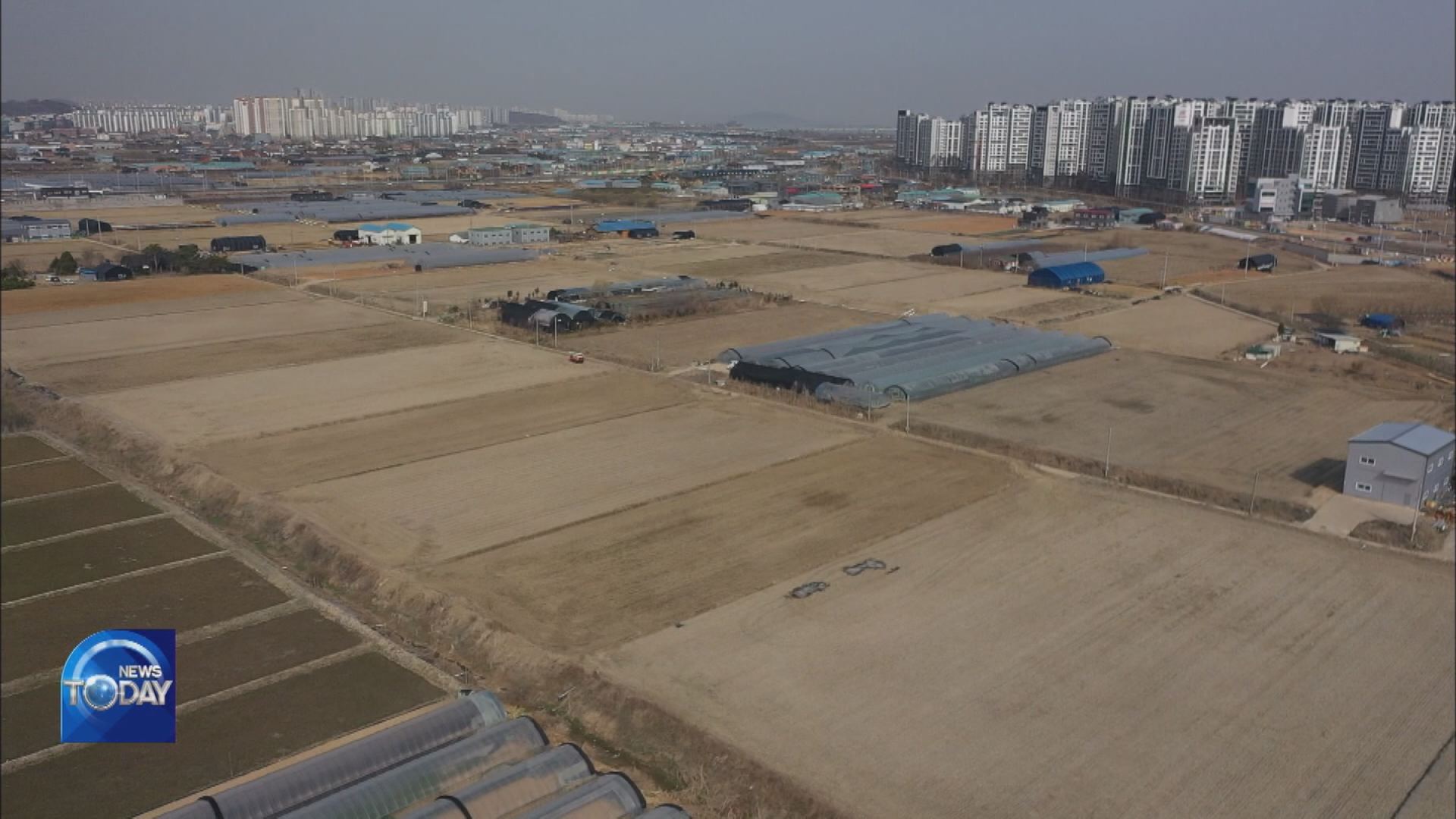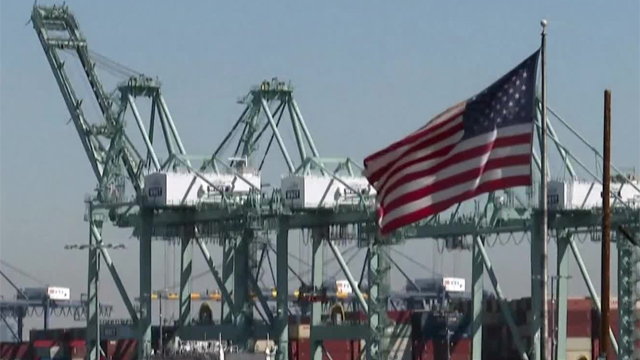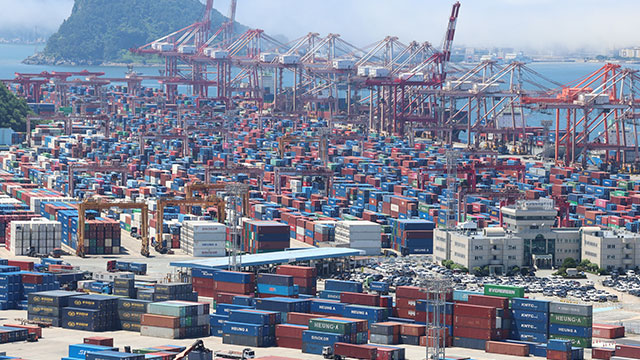DIFFICULTIES IN FARMING SECTOR CONTINUE
입력 2021.04.05 (15:30)
수정 2021.04.05 (16:49)
읽어주기 기능은 크롬기반의
브라우저에서만 사용하실 수 있습니다.
[Anchor Lead]
Farming communities are experiencing severe labor shortages as the busy farming season has arrived. Until now foreign workers have filled most of the shortages, but the pandemic has made it more difficult for these migrant workers from entering Korea.
[Pkg]
This spring vegetable farm will have to ship out produce in May. It requires about 20 workers per day to remove the plastic covers so the crops can adjust to conditions outdoors, as well as weed and harvest. But the farm only managed to hire around three or four workers.
[Soundbite] Lee Jong-yeon(Local Farmer) : "Delays have hurt the crop’s marketability. It’s a serious problem but what can I do?"
This orchard is in a bind as well. Once the pear flowers bloom, they need to be artificially pollinated and then thinned and covered in paper. All the work must be done manually, but no farmhands are available.
[Soundbite] Woo Hyeon-sik(Local Farmer) : "People think farming has mechanized, but more than 80% of the work still has to be done by hand. These days I can’t find any workers."
Because of declining population and aging, more than 90% of workers in farming communities are foreign laborers. Roughly 10,000 migrant workers used to come to rural areas in Korea every year. But the pandemic has barred their entry since last year, leading to a severe shortage. This situation jacked up the daily wages of laborers in orchards as well as crop and livestock farms by 20 to 30%, or up to 130,000 won per day. The government and local government bodies used measures such as temporary work permit or recruiting workers from cities. But these measures have proven insufficient.
[Soundbite] Yang Du-gyu(Agricultural Policy Team, Provincial Gov’t) : "It’s not enough, but we try to keep providing more help to the struggling farmers."
The prolonged pandemic is worsening the labor shortages in rural communities.
Farming communities are experiencing severe labor shortages as the busy farming season has arrived. Until now foreign workers have filled most of the shortages, but the pandemic has made it more difficult for these migrant workers from entering Korea.
[Pkg]
This spring vegetable farm will have to ship out produce in May. It requires about 20 workers per day to remove the plastic covers so the crops can adjust to conditions outdoors, as well as weed and harvest. But the farm only managed to hire around three or four workers.
[Soundbite] Lee Jong-yeon(Local Farmer) : "Delays have hurt the crop’s marketability. It’s a serious problem but what can I do?"
This orchard is in a bind as well. Once the pear flowers bloom, they need to be artificially pollinated and then thinned and covered in paper. All the work must be done manually, but no farmhands are available.
[Soundbite] Woo Hyeon-sik(Local Farmer) : "People think farming has mechanized, but more than 80% of the work still has to be done by hand. These days I can’t find any workers."
Because of declining population and aging, more than 90% of workers in farming communities are foreign laborers. Roughly 10,000 migrant workers used to come to rural areas in Korea every year. But the pandemic has barred their entry since last year, leading to a severe shortage. This situation jacked up the daily wages of laborers in orchards as well as crop and livestock farms by 20 to 30%, or up to 130,000 won per day. The government and local government bodies used measures such as temporary work permit or recruiting workers from cities. But these measures have proven insufficient.
[Soundbite] Yang Du-gyu(Agricultural Policy Team, Provincial Gov’t) : "It’s not enough, but we try to keep providing more help to the struggling farmers."
The prolonged pandemic is worsening the labor shortages in rural communities.
■ 제보하기
▷ 카카오톡 : 'KBS제보' 검색, 채널 추가
▷ 전화 : 02-781-1234, 4444
▷ 이메일 : kbs1234@kbs.co.kr
▷ 유튜브, 네이버, 카카오에서도 KBS뉴스를 구독해주세요!
- DIFFICULTIES IN FARMING SECTOR CONTINUE
-
- 입력 2021-04-05 15:30:03
- 수정2021-04-05 16:49:48

[Anchor Lead]
Farming communities are experiencing severe labor shortages as the busy farming season has arrived. Until now foreign workers have filled most of the shortages, but the pandemic has made it more difficult for these migrant workers from entering Korea.
[Pkg]
This spring vegetable farm will have to ship out produce in May. It requires about 20 workers per day to remove the plastic covers so the crops can adjust to conditions outdoors, as well as weed and harvest. But the farm only managed to hire around three or four workers.
[Soundbite] Lee Jong-yeon(Local Farmer) : "Delays have hurt the crop’s marketability. It’s a serious problem but what can I do?"
This orchard is in a bind as well. Once the pear flowers bloom, they need to be artificially pollinated and then thinned and covered in paper. All the work must be done manually, but no farmhands are available.
[Soundbite] Woo Hyeon-sik(Local Farmer) : "People think farming has mechanized, but more than 80% of the work still has to be done by hand. These days I can’t find any workers."
Because of declining population and aging, more than 90% of workers in farming communities are foreign laborers. Roughly 10,000 migrant workers used to come to rural areas in Korea every year. But the pandemic has barred their entry since last year, leading to a severe shortage. This situation jacked up the daily wages of laborers in orchards as well as crop and livestock farms by 20 to 30%, or up to 130,000 won per day. The government and local government bodies used measures such as temporary work permit or recruiting workers from cities. But these measures have proven insufficient.
[Soundbite] Yang Du-gyu(Agricultural Policy Team, Provincial Gov’t) : "It’s not enough, but we try to keep providing more help to the struggling farmers."
The prolonged pandemic is worsening the labor shortages in rural communities.
Farming communities are experiencing severe labor shortages as the busy farming season has arrived. Until now foreign workers have filled most of the shortages, but the pandemic has made it more difficult for these migrant workers from entering Korea.
[Pkg]
This spring vegetable farm will have to ship out produce in May. It requires about 20 workers per day to remove the plastic covers so the crops can adjust to conditions outdoors, as well as weed and harvest. But the farm only managed to hire around three or four workers.
[Soundbite] Lee Jong-yeon(Local Farmer) : "Delays have hurt the crop’s marketability. It’s a serious problem but what can I do?"
This orchard is in a bind as well. Once the pear flowers bloom, they need to be artificially pollinated and then thinned and covered in paper. All the work must be done manually, but no farmhands are available.
[Soundbite] Woo Hyeon-sik(Local Farmer) : "People think farming has mechanized, but more than 80% of the work still has to be done by hand. These days I can’t find any workers."
Because of declining population and aging, more than 90% of workers in farming communities are foreign laborers. Roughly 10,000 migrant workers used to come to rural areas in Korea every year. But the pandemic has barred their entry since last year, leading to a severe shortage. This situation jacked up the daily wages of laborers in orchards as well as crop and livestock farms by 20 to 30%, or up to 130,000 won per day. The government and local government bodies used measures such as temporary work permit or recruiting workers from cities. But these measures have proven insufficient.
[Soundbite] Yang Du-gyu(Agricultural Policy Team, Provincial Gov’t) : "It’s not enough, but we try to keep providing more help to the struggling farmers."
The prolonged pandemic is worsening the labor shortages in rural communities.
이 기사가 좋으셨다면
-
좋아요
0
-
응원해요
0
-
후속 원해요
0













![[속보] 정성호 “검찰 해체 표현 부적절…국민 요구사항, 검사들도 잘 알 것”](/data/layer/904/2025/07/20250701_86evyp.png)



이 기사에 대한 의견을 남겨주세요.